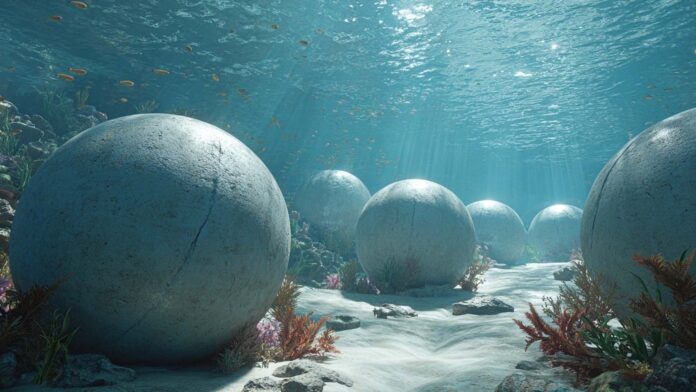Renewable energy storage is a recurring topic on this page. We have already covered large-scale projects such as the mega-batteries at Cunningham Park in Texas, designed to store vast amounts of electricity. These solutions offer many benefits, the most important of which is the ability to store surplus energy and release it when production drops—due to a lack of sun or wind—thereby stabilising the energy grid.
This time, however, we are venturing into more experimental territory: giant spheres installed on the seabed that could offer a highly efficient answer to the energy storage challenge. The project, known as StEnSea (Stored Energy in the Sea), is an initiative led by the Fraunhofer Institute, and we explain how it works in this article.
StEnSea: Underwater renewable energy storage
In essence, StEnSea is an underwater hydroelectric energy storage system that harnesses water pressure at great depths to store power inside hollow concrete spheres. Each sphere weighs around 400 tonnes and measures nine metres in diameter. They are placed on the seabed at depths ranging from 600 to 800 metres. The concept is based on a proven principle known as pumped storage, which operates in two main phases:
- Energy storage (pumping phase). When there is a surplus of electricity—typically during periods of high solar or wind energy production—that energy is used to pump water out of the sphere. As water is expelled, the sphere is filled with air.
- Energy release (generation phase). When additional power is needed, the process is reversed. Water is allowed to flow back into the sphere. At these depths, ocean pressure is intense, so the incoming water drives a turbine connected to a generator. The resulting electricity can then be fed back into the grid according to demand.
The key advantage of the system lies in its use of natural ocean pressure at depth, which generates a significant amount of potential energy. In fact, the deeper the sphere is installed, the greater the water pressure—and thus the greater the energy yield.
According to the project’s developers, each sphere—especially when paired with offshore wind farms—could store enough energy to power a typical US household for two weeks.
Advantages of the system
- Efficient use of space. Installed on the seabed, the spheres require no surface land, making them especially attractive in urban or densely populated areas.
- Durability and sustainability. Concrete is a robust material capable of withstanding harsh underwater conditions for decades. The expected lifespan of each sphere is between 50 and 60 years.
- Compatibility with renewable energy. The system is an ideal companion to intermittent sources like wind and solar, offering reliable long-term energy storage to help stabilise the grid.
- Scalability and modularity. Its modular design allows multiple spheres to be deployed across various locations. This makes it possible to tailor storage capacity to the needs of specific regions and scale up as required.
Big challenges (and an ambitious pilot) ahead
Despite its potential in the clean energy transition, the StEnSea project still faces several technical and economic hurdles. Building and deploying the spheres requires substantial investment, and the technology remains in the experimental phase. Still, early trials at Lake Constance in Germany have shown encouraging results.
The next step is a large-scale pilot project, which will involve 3D-printing a prototype off the coast of Long Beach, California. Scheduled for completion by the end of 2026, the goal is to build spheres up to 30 metres in diameter and install entire underwater energy parks to serve as clean energy reservoirs.
A sand battery
The Fraunhofer Institute’s seabed spheres are not the only innovation in renewable energy storage that has caught our eye. Some time ago, we reported on a pilot project in a Finnish village where thermal energy is stored in a giant sand battery. This technology uses an electric resistor to heat the sand, taking advantage of the low heat transfer of silicon dioxide to minimise heat loss.
The system captures and stores heat from solar power, reaching temperatures of up to 500°C, and then gradually releases it. With a storage capacity of up to 8 MWh, the sand battery is already in use in the town of Kankaanpää, where it provides heat for residential buildings and even a municipal swimming pool during the winter months.
If you are interested in the latest developments in renewable energy—from cutting-edge storage systems to next-generation solutions—make sure to subscribe to our newsletter at the bottom of this page.
Source:


